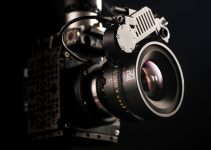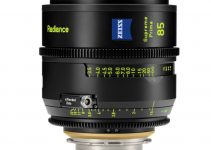Colour subsampling is an oft-quoted but frequently misunderstood spec on the camera bio. It is regularly shown in line with the camera resolution, bit depth, and frame rate – but does it deserve such prominent billing?
In this video, Gerald Undone compares the Sony A7III internal and external recording quality, using an Atomos Ninja recorder. There are a variety of benefits to using the Atomos Ninja V over simply recording internally, but the tests here relate to the colour subsampling, specifically the comparison on 4:2:0 vs 4:2:2. Have a look at the results.
Gerald Undone has a knack for taking some very complex topics and distilling them down into manageable videos… and he also has an earworm intro theme!
Adding the Atomos to the Sony A7iii won’t change the bit depth; although the Atomos can record 10-bit it doesn’t change the fact that only 8-bit is coming out of the camera.
Colour or Chroma subsampling is simply the combining of colour information to save data bandwidth in the camera. Since our eyes are more attuned to brightness being reduced than they are to colour being reduced, cameras tend to reduce the colour over the brightness.
4:4:4 is full colour resolution, 4:2:2 is slightly less colour resolution and 4:2:0 is slightly less again.
The bit depth determines the number of colours available and that’s not changing so what we are really looking for here is banding between colours.
The tests in the video use gradients of light recorded in both modes and require some pretty extreme grading in post to see any significant differences at all. On YouTube, I suspect these differences are even harder to see.
The first test shows no significant differences except for some increased blockiness in the image noise. Recorded externally via the Atomos, the noise is finer.
The second test uses a Rubix cube with a colour gradient in the background and again it’s very hard to make out any differences in the images. Even when pushed to ridiculous levels of colour grading there doesn’t appear to be any difference.
The last test is an attempt to recreate other tests shown online that seem to suggest the colour subsampling has a huge impact on the image. In this example, it is once again very tricky to see any big impact on the image. With an extreme level of colour grading the banding does begin to appear but surely this level is way beyond anything you would ever use on your own footage.
In summary, it doesn’t appear to be worthwhile trying to upgrade your colour subsampling to improve your image overall. There may be a tiny improvement but not enough to justify buying an external recorder only for that.
That doesn’t mean, however, that the Atomos is not worth buying. It will give you a bigger screen with loads of lovely image functions like exposure tools and built-in LUTs. It will also let you record to SSDs instead of SDs giving you more capacity, reliability, and speed. The codecs and bit depth on offer may increase the power and capability of your camera. The whole unit may offer you some ergonomic advantages too, allowing you to position the screen in different ways.
You would see a huge improvement between, for example, 8-bit 4:2:0 and 10-bit 4:2:2 but keeping all else the same, 4:2:2 vs 4:2:0 just isn’t worth the extra money. As always, try for yourself, use what works for you and don’t stress the numbers.
[source: Gerald Undone]
Order Links:
Sony Alpha A7 III Mirrorless Digital Camera (B&H, Amazon)
Atomos Ninja V 5″ 4K HDMI Recording Monitor (B&H, Amazon)
Disclaimer: As an Amazon Associate partner and participant in B&H and Adorama Affiliate programmes, we earn a small comission from each purchase made through the affiliate links listed above at no additional cost to you.



